HEPA filtration stands for High Efficiency Particulate Arresting or Air, and this filtration is the highest standard for physical air filtration being used by air purifiers today. In addition to being used in air purifiers, HEPA filters have also been integrated into vacuum cleaners, automobiles and even aircrafts. Therefore, this type of air filtration is a highly used and valued method of filtration in many air purifiers, and thus it’s important to learn more about how this superior filtration works when used in an air purifier and the difference between other HEPA filters that claim to be a “True HEPA”.
In this article we are going to learn more about HEPA filters, including the differences between HEPA vs True HEPA, how does a HEPA filter work, and how does this type of filtration compare to other air filtration methods like carbon technology.
How Do HEPA Filters Work
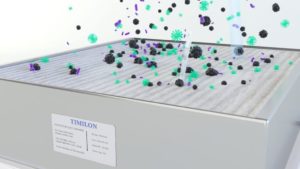 HEPA filters are a type of mechanical air filter that works by forcing air through a fine mesh that traps harmful particles such as pollen, dust mites, pet dander, tobacco smoke, and other fine particulate matter in the air. Particles found in the air range in size and these measurements are based off of the micron measurement. Microns are one-millionth of a meter and this is the measurement that is used to measure particulate matter in the air. Depending on the size of the particle, the HEPA filter will trap the contaminants in a complex web of fibers.
HEPA filters are a type of mechanical air filter that works by forcing air through a fine mesh that traps harmful particles such as pollen, dust mites, pet dander, tobacco smoke, and other fine particulate matter in the air. Particles found in the air range in size and these measurements are based off of the micron measurement. Microns are one-millionth of a meter and this is the measurement that is used to measure particulate matter in the air. Depending on the size of the particle, the HEPA filter will trap the contaminants in a complex web of fibers.
HEPA filters are bestowed this name based on their ability to capture fine particulate matter larger than 0.3 microns on its media surface – and this can include all particles that can reach into your lungs, with 0.3 microns in size being the smallest size particle to enter into the human lungs. As the airborne contaminants collide with the HEPA’s fibers and become trapped, it will keep effectively filtering out both small and large contaminants from the air.
HEPA vs True HEPA
When you are looking for a HEPA filter, you may notice that some of these filters claim to be a “True HEPA”, what does this really mean when comparing a HEPA vs True HEPA? It has been stated that to be identified as a True HEPA this type of HEPA filter must be able to remove 99.99% of airborne particles that enter into the filter, down to 0.3 microns in size. This efficiency rating expressed by particles is for every 10,000 particles that are flowing through a HEPA filter, only about 3 of these particles escape back into your air after being filtered through this filtration method.
A True HEPA is mostly composed of a highly dense paper, which can be made of very thin fibers with distances between 0.3 and 2.0 microns. This allows for the filter to capture a broad array of fine particulate matter, ranging in size from small, medium and large in the air. Additionally, the highly dense paper used as the pleated filter media of the HEPA filter is typically housed in a metal or plastic frame with a seal around it that prevents air particles from escaping what the True HEPA has caught during its filtration process.
What Do HEPA Filters Remove
 The power of HEPA filtration is its superior capability to trap particulate matters that can be found floating throughout the indoor air space of a home or other personal indoor environment. In particular, however, the HEPA filtration will be effective at removing those pesky particulates from the air like pet dander, pollen, dust mites, mold spores, bacteria, and viruses that are larger than 0.3 microns in size. Anything that is present in the air that is smaller than 0.3 microns will not be collected in the filter media of a HEPA filter and will become recirculated back into your indoor air quality.
The power of HEPA filtration is its superior capability to trap particulate matters that can be found floating throughout the indoor air space of a home or other personal indoor environment. In particular, however, the HEPA filtration will be effective at removing those pesky particulates from the air like pet dander, pollen, dust mites, mold spores, bacteria, and viruses that are larger than 0.3 microns in size. Anything that is present in the air that is smaller than 0.3 microns will not be collected in the filter media of a HEPA filter and will become recirculated back into your indoor air quality.
When it comes to the ability of HEPA filters to capture and remove other pollutants from the air such as gaseous and odorous compounds, the filter will not have the efficiency or filtration power to remove these pollutants in the air. Thus, that is why often times air purifiers will contain a HEPA filter used in conjunction with another filter for noxious and toxic chemical and odor removal from the air, like carbon technology.
HEPA vs Carbon Filter
Carbon air filters are one of the most popularly used air filters for consumers, due to its ability to effectively “adsorb” chemical and odor compounds onto the carbon filter media, trapping them onto the fibers of the carbon as it comes into contact with the filter as air is pushed through it. Many air purification companies will use a carbon air filter for chemical and odor adsorption, along with the use of True HEPA filter to provide particulate filtration in the air – making the air purifier a well-rounded pollutant removing device for your indoor environment. However, when it comes to using carbon air filters to remove these different compounds from the air, it can produce a negative reaction where the filter will begin re-releasing the collected pollutants from the carbon filter media and back into the air when the filter becomes full – thus working counterproductively in the indoor environment.
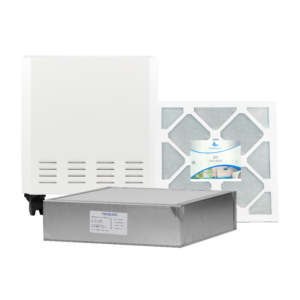 Instead of using the traditional carbon filtration method, the EnviroKlenz air quality solution can be the safe and effective air filtration option you have been looking for in your home. EnviroKlenz uses a proprietary safe earth mineral technology that works effectively to capture, contain, and neutralize a broad spectrum of noxious and toxic chemicals and odors from the air, completely neutralizing them from the environment rather than storing them on a filter media like carbon. In addition to the use of this proprietary EnviroKlenz technology for chemical and odor neutralization, the EnviroKlenz Air Purifier also contains a hospital-grade HEPA filter for fine particulate removal as small as 0.3 microns in size at a 99.99 percent efficiency, which is higher than a True HEPA filter.
Instead of using the traditional carbon filtration method, the EnviroKlenz air quality solution can be the safe and effective air filtration option you have been looking for in your home. EnviroKlenz uses a proprietary safe earth mineral technology that works effectively to capture, contain, and neutralize a broad spectrum of noxious and toxic chemicals and odors from the air, completely neutralizing them from the environment rather than storing them on a filter media like carbon. In addition to the use of this proprietary EnviroKlenz technology for chemical and odor neutralization, the EnviroKlenz Air Purifier also contains a hospital-grade HEPA filter for fine particulate removal as small as 0.3 microns in size at a 99.99 percent efficiency, which is higher than a True HEPA filter.
The EnviroKlenz® Difference
EnviroKlenz®
The EnviroKlenz® Mobile Air System is a class of its own. It uses two stages of filtration to safely provide clean air.
The EnviroKlenz® Air Cartridge uses safe, earth mineral technology to absorb and then internally break down the chemical without releasing anything into your environment.
The HEPA filter in the EnviroKlenz® Mobile Air System collects dust, allergens, and particulates as small as 0.3 microns at a 99.99% efficiency.
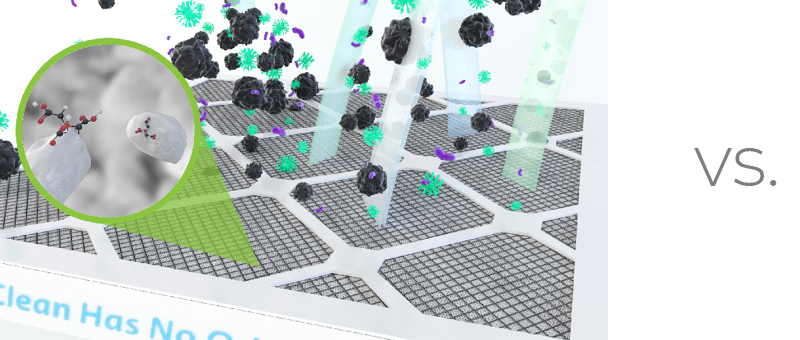
HEPA Technology
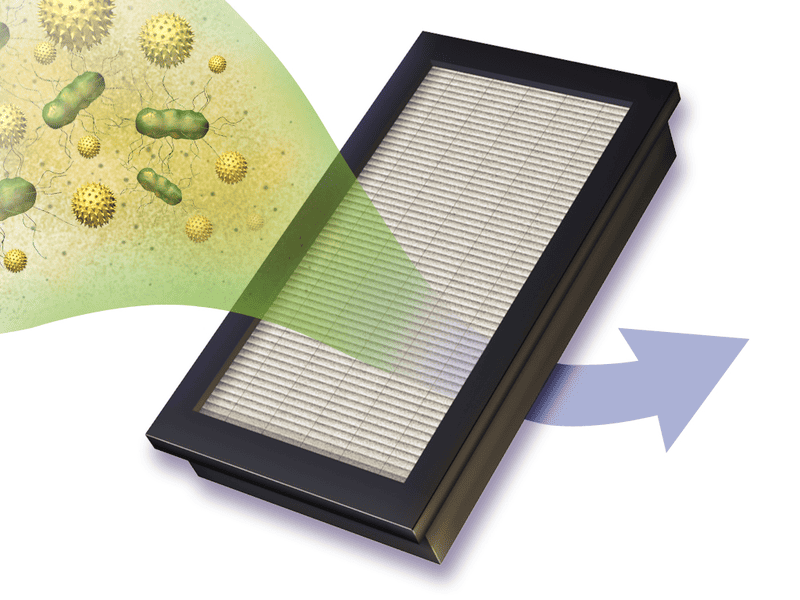 HEPA filters work great for the capture of dust, pollen, pet dander, and other particles 0.3 microns and larger. The EnviroKlenz® Mobile Air System contains a hospital grade HEPA for this purpose.
HEPA filters work great for the capture of dust, pollen, pet dander, and other particles 0.3 microns and larger. The EnviroKlenz® Mobile Air System contains a hospital grade HEPA for this purpose.
HEPA filters do not have the capability to neutralize or capture VOCs or Chemicals, the EnviroKlenz® Mobile Air System uses HEPA filtration alongside high efficiency chemical and odor neutralization technology to create your cleanest air.
Carbon Technology
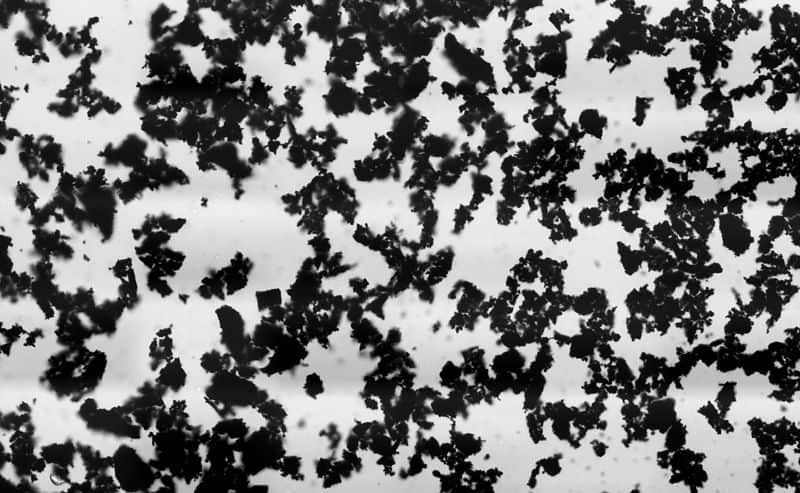
Carbon filters can absorb some chemicals and odors. However, traditional carbon filters can re-release the captured chemicals and odors back into your environment.
Activated Carbon is treated with chemicals to try to destroy what it absorbs, but that ultimately releases different chemicals into your air.
The EnviroKlenz® Mobile Air System adsorbs the chemical pollutants and then reacts internally to neutralize the compound, without releasing or rereleasing into your environment.
The EnviroKlenz® Air Cartridge outperforms the leading carbon filter while using 1/8 the volume of material.
Ionizer Technology
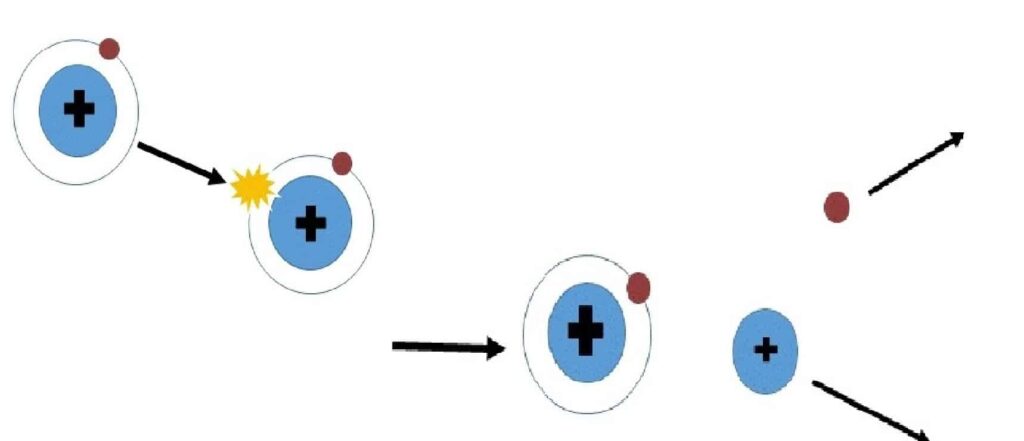
Ionizers release negatively charged ions into your air to stick to particles. This doesn’t eliminate or remove the chemicals, odors, or particulates. It just weighs them down.
The EnviroKlenz® technology does not release anything into your environment. Instead, the Mobile Air System brings air into the machine to be filtered out and neutralized internally so that nothing but clean air is being released.
Ozone Technology

Ozone machines, or “Ozone Generators” are very dangerous to use. These “air purifiers” release harmful ozone into the air to bind with different chemical pollutants. It is dangerous because the ozone itself is extremely toxic.
The EnviroKlenz® Mobile Air System never releases anything into your environment. It uses safe earth minerals and ultimately reacts with chemical pollutants within the machine. You can even use an EnviroKlenz system to remove lingering ozone after a room has been treated with an ozone generator.
PECO Technology
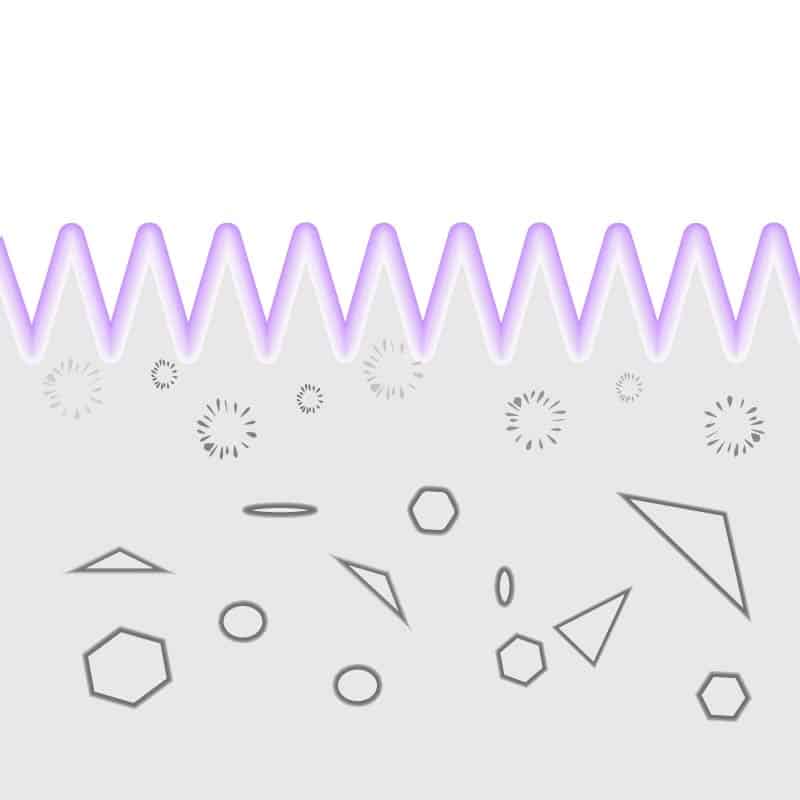
PECO and PCO systems use a light to excite the reactive material within the machine. The excited material then binds to and reacts with the chemicals and particulates that pass through the filter. These exposed reactions can result in a number of different byproducts to be released into your air.
The EnviroKlenz® Mobile Air System does not release byproducts into your air. The reactions that occur in the EnviroKlenz® Air Cartridge occur internally in the earth minerals and are not at risk of releasing or rereleasing into your environment.

Mobile Air System
$749.00 $699.00
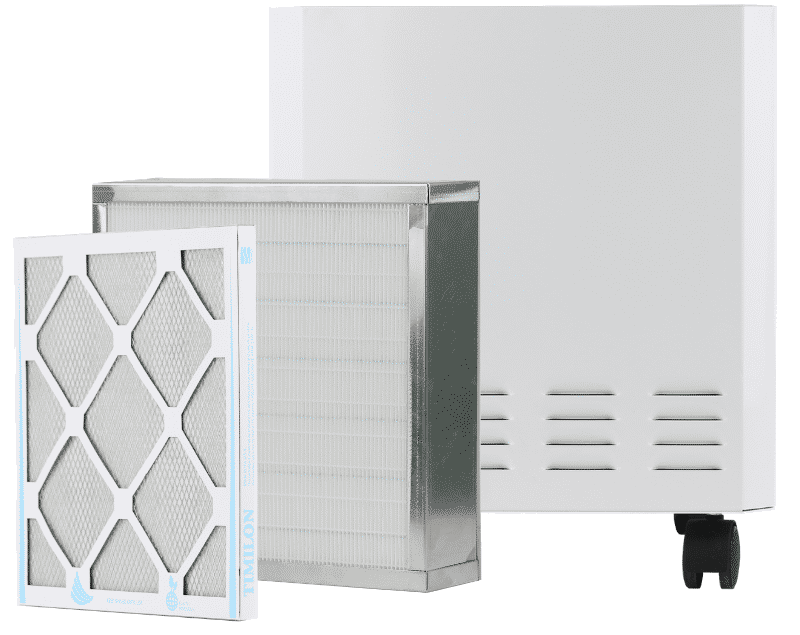
✓ Patented earth mineral technology works to attack VOCs and break them down on a compound level
✓ No chemicals or masking agents
✓ Will not release any chemicals back into your environment
✓ Safer and faster at removing VOC’s than traditional carbon filters and PECO air purifiers
